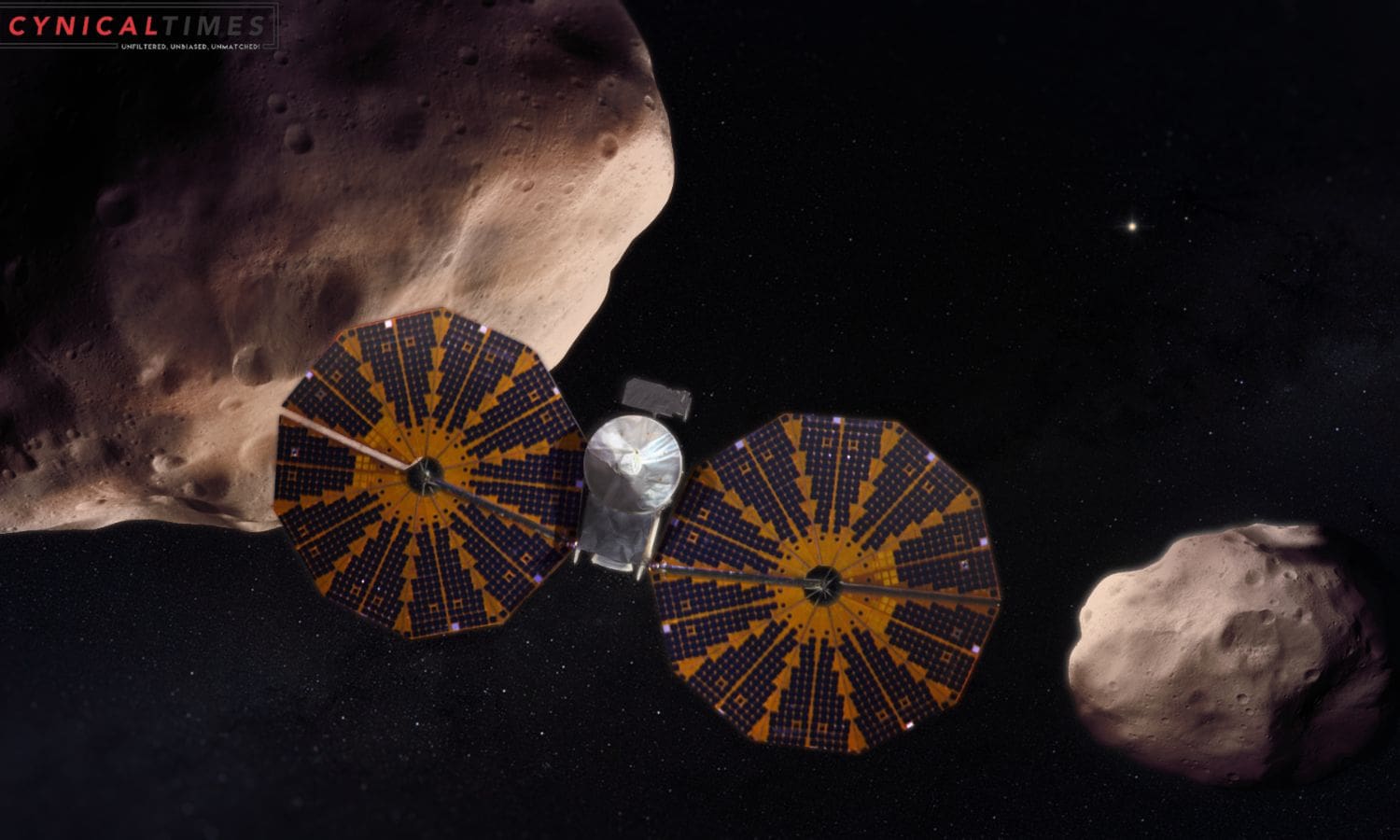NASA Psyche Mission Offers a Glimpse Beyond: NASA’s Psyche mission, launched in October with the aim of studying a peculiar metal asteroid nestled in the main belt between Mars and Jupiter, recently marked a significant milestone by sharing its first images. Although the spacecraft is still en route, scheduled to reach the asteroid in 2029, it has already started testing its instruments by capturing a test image using its two cameras. This process, known as “first light,” involves taking a snapshot and transmitting it back to Earth.
The image, a mosaic composed of 68 individual images captured by Psyche’s two cameras, showcases a field of stars located in the Pisces constellation. While the chosen region lacked specific scientific interest, it served as a valuable test for the cameras’ functionality. Psyche’s first camera, Imager A, covered the left side, while Imager B captured images for the right side. Though the region didn’t boast many bright stars, the test successfully demonstrated the cameras’ capabilities.


Also Read: Aviation Green Challenge: Navigating Towards a Sustainable Sky
Psyche’s Imager Instrument Lead, Jim Bell of Arizona State University, expressed excitement about the initial images, stating, “For the team that designed and operates this sophisticated instrument, first light is a thrill.” He outlined the upcoming plans, mentioning that in 2026, test images of Mars would be taken during the spacecraft’s flyby. The most anticipated images, of the target asteroid Psyche, are expected in 2029, offering an unprecedented glimpse into this metallic celestial body.
In addition to capturing these celestial snapshots, the Psyche mission achieved another noteworthy feat in its journey. It recently conducted a laser communications test called Deep Space Optical Communications (DSOC). Integrated into the mission, DSOC aims to evaluate the feasibility of using laser communications in deep space. This technology has the potential to provide bandwidths up to 100 times greater than the radio frequency communication systems currently employed on deep space missions. The successful integration of DSOC could revolutionize communication capabilities for future space exploration endeavors.
Our Reader’s Queries
What is the purpose of NASA’s Psyche mission?
The Psyche mission is set to embark on a groundbreaking exploration of an asteroid that boasts a surface rich in metal, a unique characteristic that sets it apart from the typical rock or ice formations. This mission is poised to revolutionize our understanding of iron cores, a crucial component in the formation of planets that has yet to be fully explored. By delving into this uncharted territory, the Psyche mission promises to unlock a wealth of new knowledge and insights that will deepen our understanding of the universe.
Why is the asteroid Psyche an interesting target for an upcoming NASA discovery mission?
The asteroid Psyche stands out from the rest due to its exceptional nature. It seems to be the exposed nickel-iron core of a planet that existed in the early stages of our solar system. This makes it a crucial building block in understanding the formation of our universe.
What is a planned goal of the Psyche mission?
The Psyche mission has set out to explore the geology, shape, elemental composition, magnetic field, and mass distribution of 16 Psyche. This exciting mission is expected to provide valuable insights into planetary formation and interiors. By delving into the mysteries of this unique asteroid, we hope to expand our knowledge of the universe and unlock new discoveries.
What is the Psyche mission proposal?
In 2029, the Psyche mission will reach its destination and spend 26 months orbiting and studying the space rock. The mission will analyze the surface composition, map the gravity, and measure any magnetic field that may exist. The magnetic field and gravity studies of Psyche are being led by scientists at MIT.

